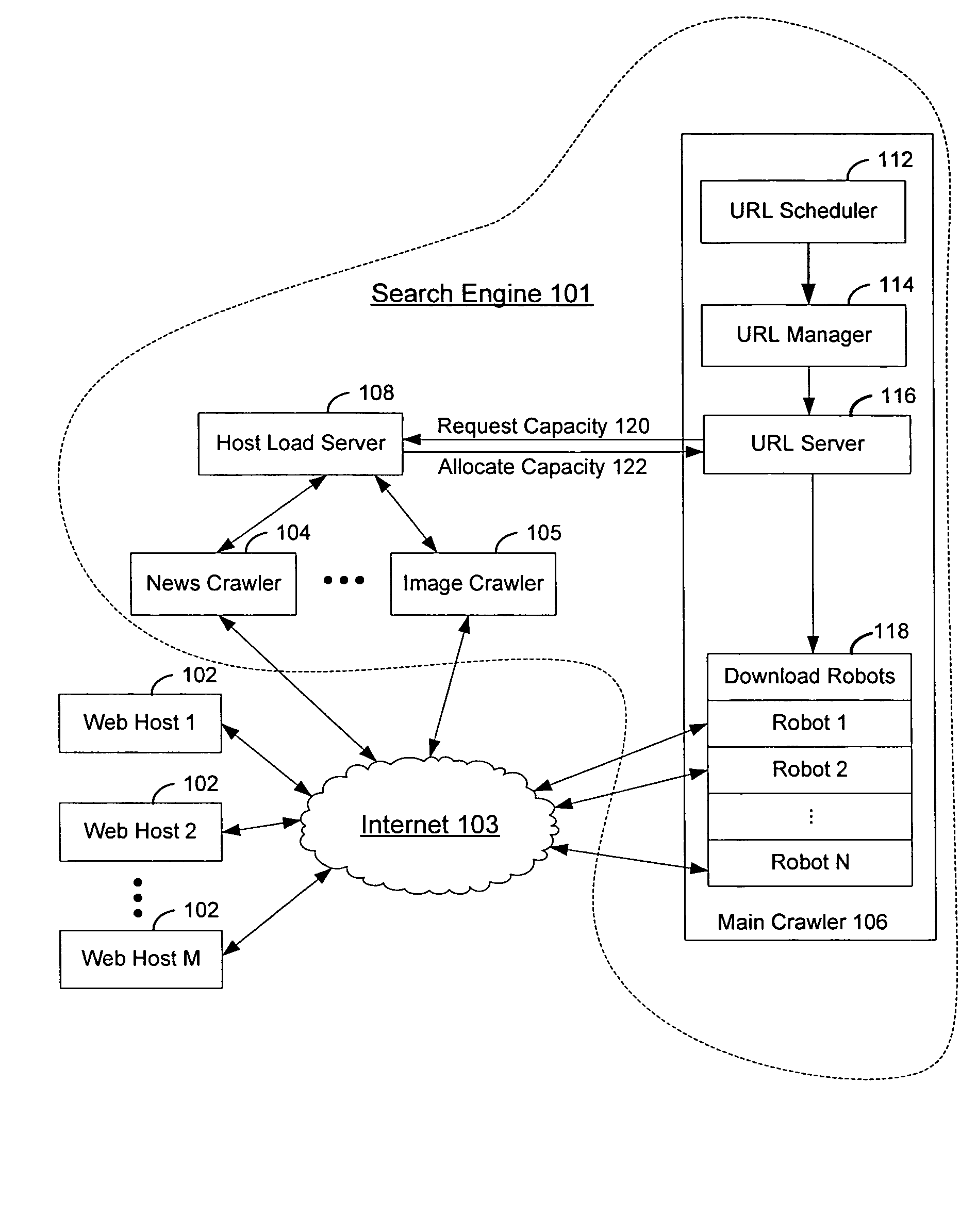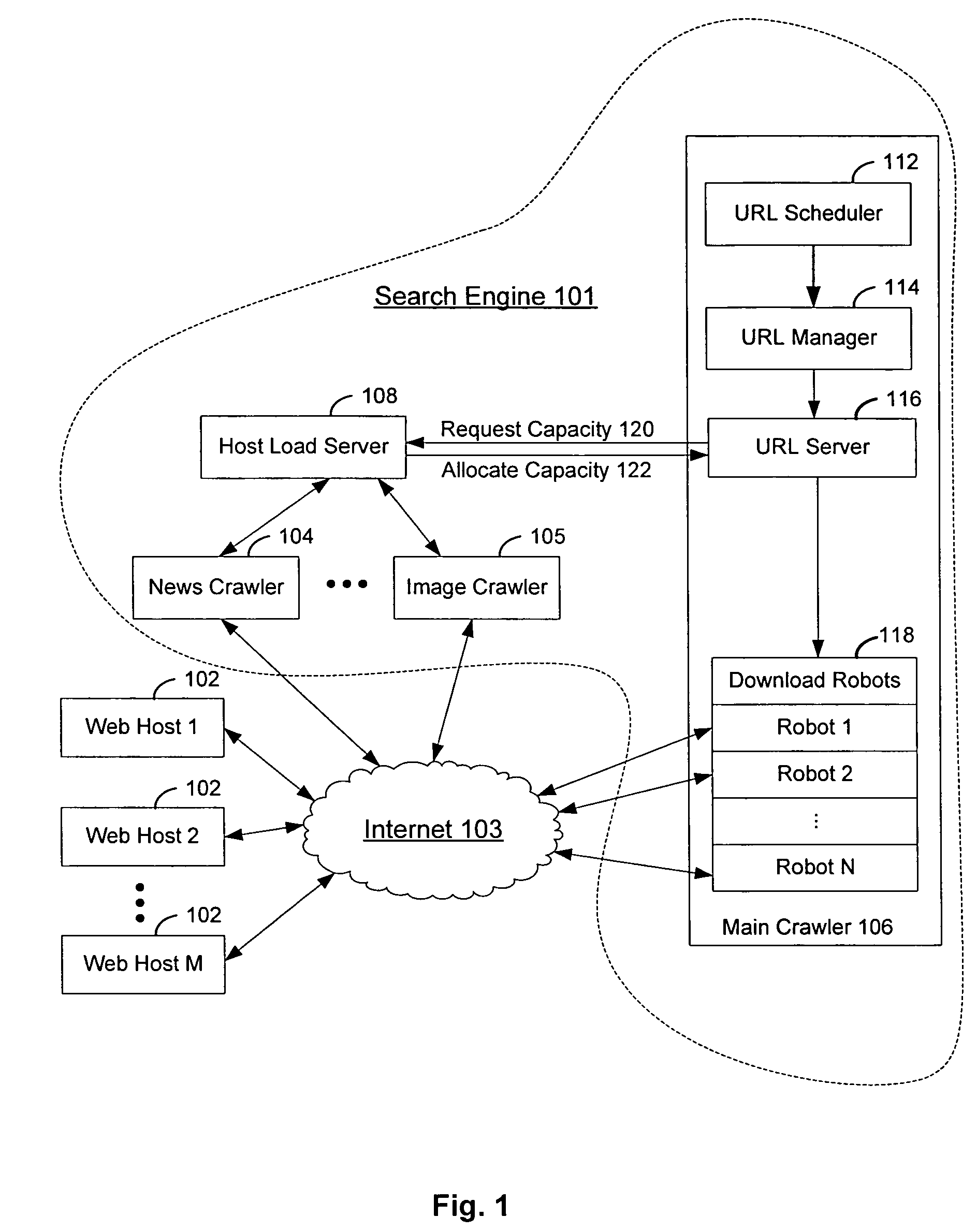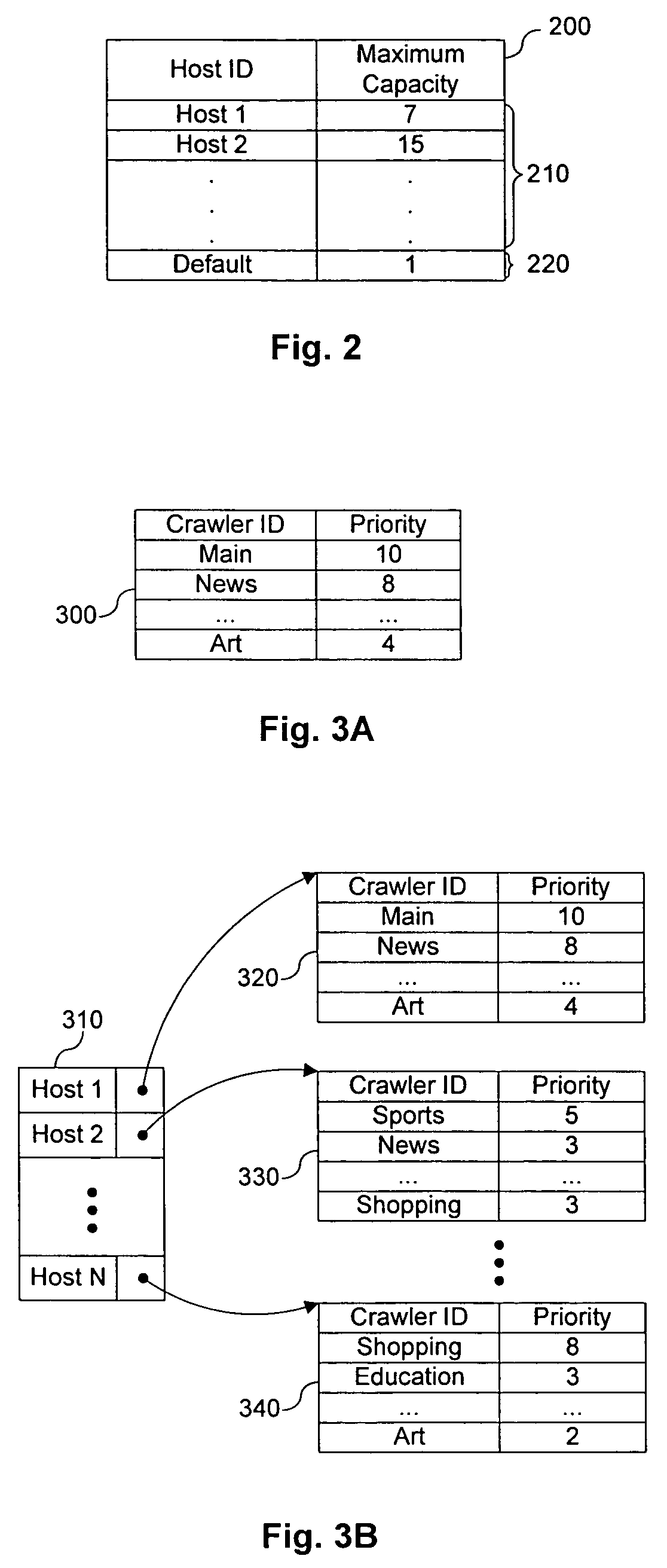Limiting requests by web crawlers to a web host
- Summary
- Abstract
- Description
- Claims
- Application Information
AI Technical Summary
Benefits of technology
Problems solved by technology
Method used
Image
Examples
Embodiment Construction
[0027]The present invention relates to a system and method of dynamically allocating a web host's load capacity among multiple competing web crawlers. One goal of the system and method is to avoid overloading any web host with more document requests than it can timely handle. Another goal of the system and method is to avoid document download delays when the web crawlers download documents from the web host.
[0028]FIG. 1 illustrates a network environment comprising a search engine 101 and a plurality of web hosts 102. The search engine 101 and the web hosts 102 are connected to each other through the Internet 103. Each web host 102 has an associated or assigned load capacity, e.g., the number of download requests it is able to handle per unit time. The search engine 101, or more specifically, the backend of the search engine 101, comprises one or more web crawlers (for example, News crawler 104, Image crawler 105 and Main crawler 106) and a host load server 108. Each of the web crawl...
PUM
 Login to View More
Login to View More Abstract
Description
Claims
Application Information
 Login to View More
Login to View More - R&D
- Intellectual Property
- Life Sciences
- Materials
- Tech Scout
- Unparalleled Data Quality
- Higher Quality Content
- 60% Fewer Hallucinations
Browse by: Latest US Patents, China's latest patents, Technical Efficacy Thesaurus, Application Domain, Technology Topic, Popular Technical Reports.
© 2025 PatSnap. All rights reserved.Legal|Privacy policy|Modern Slavery Act Transparency Statement|Sitemap|About US| Contact US: help@patsnap.com



